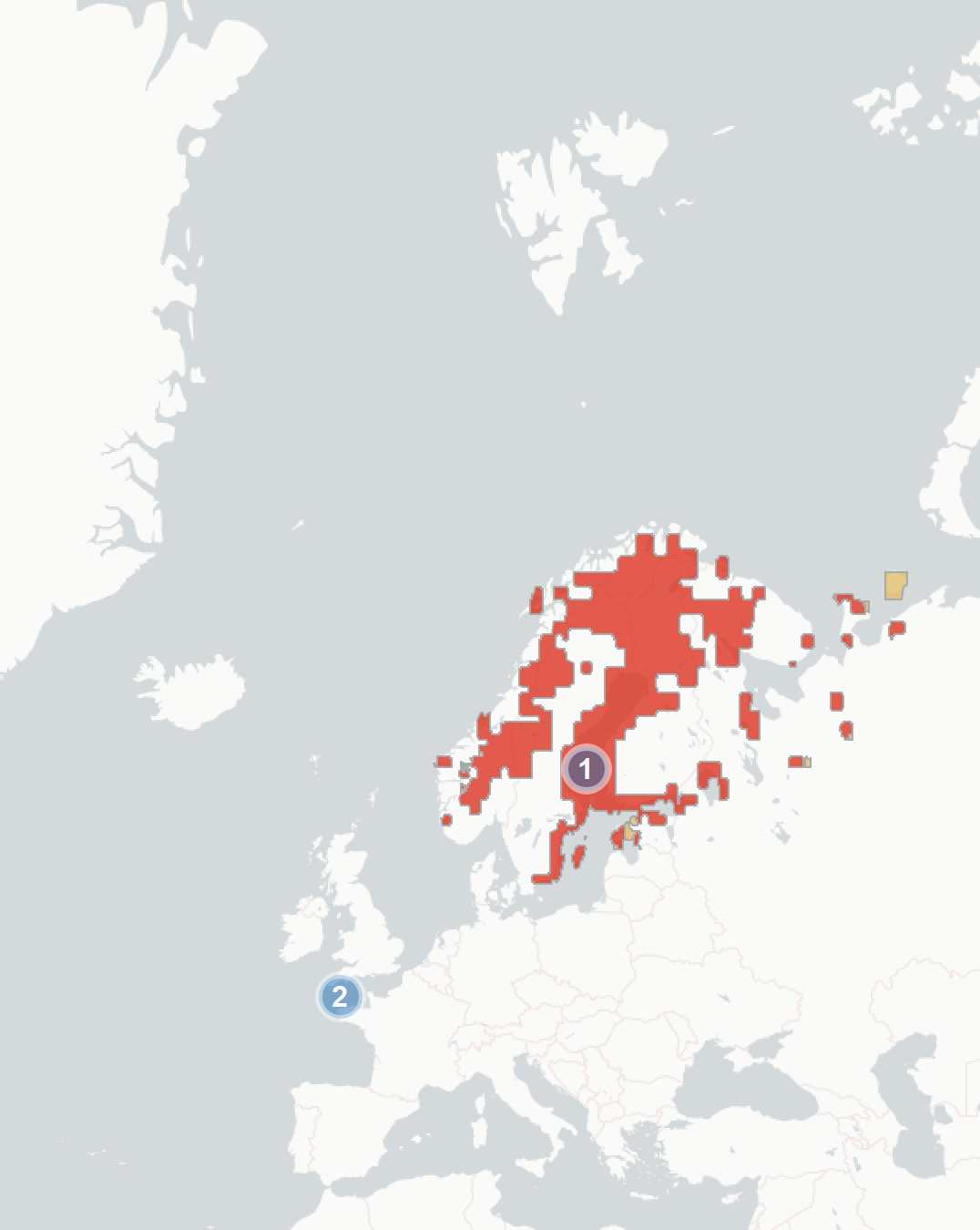Velvet Scoter (Melanitta fusca): vulnerability to climate change
Evidence for exposure
Potential changes in breeding habitat suitability:
-
Current breeding area that is likely to become less suitable (96% of current range)
-
Current breeding area that is likely to remain suitable (4%)
-
Current breeding area that is likely to become more suitable (0%)
Current impacts to Velvet Scoters attributed to climate change:
-
Neutral Impact: Scoters are starting their autumn migration significantly later in response to changing climate.
-
Neutral Impact: Wintering populations have redistributed, most likely due to lack of prey caused at least partly by climate change.
Predicted changes in key prey species:
No key prey species are predicted to decline for this species.
Climate change impacts outside of Europe
-
Climate change has contributed to declines of scoter populations in North America. Earlier spring snow melt has likely led to a trophic mismatch and lower breeding success in scoters.
Sensitivity
-
The species is numerous, has a large breeding range, but has suffered rapid declines since 1970. Particularly sensitive during non-breeding season as it gathers in high concentrations in relatively small areas (>90% of the global population winters in the Baltic). Addition pressure from climate change is likely to accellerate these declines.
-
Many populations of velvet scoters rely on several key mollusc species for much of the year, many of which are known to be sensitive to climate change. Warmer conditions and ocean acidification are likely to result in reduction of key prey species.
-
Scoters, long tailed ducks and eiders have shown declines during historical regime shifts in marine ecosystems, they are likely to sensitive to future changes in marine ecosystems.
-
Key wetland breeding habitats across the Arctic are rapidly disappearing or changing. The overall impact on velvet scoters is unknown, but very likely to be negative.
-
Often nests on low lying areas near water, sensitive to flooding due to increased rainfall or wave-action. Any increase in intensity or frequency of storms is likely to impact breeding populations
-
Velvet scoters tend to winter in large groups in relatively small areas, so are vulnerable to mass mortality through extreme events. Even localised climate change impacts may have large consequences on the population as a whole.
-
Recent observations and anecdotal reports have reported large groups of non-breeding scoters in the Baltic, many of which in poor condition. This may indicate high levels of stress, and, as it was not observed previously, may be a result of climate change. Further research is needed to clarify the cause of this and the long-term impact on the species.
Adaptive capacity
-
Analysis of laying dates show there is little plasticity in response to changes in temperature, but there is some variation across and within populations.
-
Species has shown flexibility in wintering sites in North America, in part predicted by year-to-year changes in sea temperature and fluctuations in NAO. Species is likely to shift wintering sites in response to climate change, and therefore buffer negative effects.
